- Home
- P. D. James
The Maul and the Pear Tree Page 7
The Maul and the Pear Tree Read online
Page 7
Meanwhile John Harriott had not been idle. His officers searched the ships in the river and at Gravesend to see if any suspicious characters had lately come aboard, and made inquiries ‘at all the old iron shops along the shore as well as at shipwrights’ yards and other places’ in an attempt to trace the maul. All was without success.
And still the hunt went on. On Wednesday, 18 December, a man named Thomas Tyler was charged at the Shadwell Office with having uttered expressions at a public house at Deptford tending to excite suspicion that he knew something important. The prisoner, while drunk, had sworn that he could prove that Marr’s brother had employed six or seven men to commit the barbaric murders, that he knew one of the men so employed, who had told him that he could not find it in his heart to cut the throat of the child, that he had since felt remorse even being present on the occasion and that he was prepared to go before a magistrate and confess all he knew of the transaction. Here indeed was surely some hopeful evidence at last; but again it fell to the ground. The prisoner protested that he was unconscious of the language attributed to him, that he had been wounded in the head in His Majesty’s service, and was sometimes so deranged, particularly when drunk, that he did not know what he said. He was totally ignorant of the murder, and if he did make the observations imputed to him, he must have heard the words in idle conversation at some public house. He brought forward his landlady and other persons acquainted with him to prove that he was home in his lodgings on the whole of Saturday fortnight, and that in consequence of his irregular and incoherent conduct at different times, he had acquired a reputation for insanity. Having examined the man at some length the magistrates took the view that the reputation was richly deserved and let him go.
He was not the only madman nor the only drunkard who was taken up and brought before the magistrates. Wapping richly abounded in vagrants, eccentrics, psychotics and minor criminals, and all were now at risk. It needed only a word from a disgruntled neighbour, a keen glance from a police officer avid for reward, a blood-stained shirt or an Irish accent, and yet another suspect was on his way to the Watch House. There was an unfortunate engraver named Simmons, for example. He was taken up on no better evidence than that ‘he evinced a strong disposition to drink, frequently coming home inebriated, was very much in the habit of skylarking, and in such freaks did many improper things. He was very industrious when sober, but when drunk there was no depending upon him.’ Happily for him Simmons had been going through one of his industrious spells on the night of the Marrs’ murder, and had been heard all night working at his engraving. His landlord testified that he could not have left the house without being heard by either himself or his wife. The magistrates accepted that this seemed a good alibi, but were reluctant to let such an unsatisfactory character loose without at least attempting to scare him into sobriety, and he too was remanded in custody.
And then, on Thursday, 19 December, after all the false starts and disappointments, a discovery of crucial importance was made concerning the maul. It seems incredible that it was not made earlier. The weapon had been in Harriott’s possession at the River Thames Police Office since the day of the murders, and one hand-bill describing it had already been issued. Its identification was obviously essential to the success of the investigation, as the hand-bill and Harriott’s searches and inquiries among the river shops and warehouses bore witness. The significance of the broken tip had been appreciated, yet it was evident that the maul had not been carefully scrutinised. We are not told who made the discovery. It may have been one of Harriott’s officers, or even the old man himself. It may have been a visiting magistrate, the Captain of an East Indiaman come to pay his respects to the celebrated John Harriott, or a gentleman of the town who, less squeamish than his fellows, and concealing his interest beneath an air of fastidious distaste, raised his eye-glass to the weapon and observed something which caused him to exclaim in excitement. A handkerchief was produced and the caked blood and hairs carefully scraped from the head of the maul. There, faint but now clearly discernible, were the initials I.P.3 punched in dots on the face. The importance of this discovery was immediately recognised and next day Harriott put out yet another hand-bill:
THAMES POLICE OFFICE WAPPING
WHEREAS it is most particularly necessary that any person who may possess any knowledge of the
MAUL
with which the late barbarous murder in Ratcliffe Highway appears to have been committed, should come forward and make the same known.
The magistrates have caused the same to be again described, and do most solemnly and urgently require that every person who may be enabled to give even the slightest information respecting it, do immediately acquaint the magistrates therewith.
The maul may be seen by any such person, on application to this office.
DESCRIPTION
The handle of the maul is 23 inches long – the head, from the face to the extremity, of the pinend, is eight inches and a half. It has a flaw on the face, and the pin-end has been broken off in flakes. It is marked faintly with the letters J.P. in dots on the crown near the face, and appears to have been marked with a coppering punch.
By order of the magistrates,
E. W. SYMONS, chief clerk.
December 20th 1811.
It was on the same day that the initials were discovered on the maul, Thursday 19 December, that Aaron Graham, one of the Bow Street magistrates, began to take an active interest in the investigation – probably at the request of the Home Secretary. He was the antithesis of the flamboyant Harriott, a quiet and intelligent bureaucrat with a logical and inquiring mind, a just appreciation of facts, and a patient tenacity in discovering them. He was bred in the tradition of Henry Fielding who some fifty years earlier had established Bow Street in its pre-eminence, had published the first index of wanted criminals, and had set up the first Bow Street thief-takers. At the time of the Marrs’ murders Aaron Graham was fifty-eight, and he was to enjoy only one more year of good health until the onset of the illness which caused him to give up his post at Bow Street, and which killed him in December 1818. He shared the interest in the theatre of more famous Bow Street magistrates, and for a number of seasons superintended the concerts at Drury Lane. His only son was a naval officer and through him Graham had some insight into the lives and ways of seamen; Ratcliffe Highway was less alien to him than it was to Capper and his colleagues.
Apart from his official position as a Bow Street magistrate, with all that implied of probity and zeal, Graham had won a high personal reputation for his conduct, six years earlier, of a murder investigation which in 1806 led to the conviction and execution of one Richard Patch, for the murder by shooting of his partner Mr Blight. The Patch case aroused extraordinary interest at the time and is noteworthy as an example of Graham’s logical and deductive way of working, his insistence on verifying facts and his capacity, rare at the time, to see himself as an active investigating officer rather than the passive recipient of information which might or might not be relevant to the crime. The case also proved to have small but interesting points of similarity with the otherwise very different murders in Ratcliffe Highway.
4 Marr’s shop and the Maul, by J. Girtin
Richard Patch, who was the son of a respectable Devon yeoman, was born in 1770, and was thirty-five at the time of the murder. He had come up to London in 1803 after a series of litigious disputes about the payment of tithes and had taken service with Mr Blight, a former West India merchant, who at that time was successfully engaged in the ship-breaking business. Patch and Blight agreed to enter a partnership and Patch sold his Devon property to obtain the necessary capital. Details of their agreement are obscure, but it was brought to a sudden end by the murder on 23 September 1805 of Blight, who was mortally wounded by a pistol while sitting in his own house. Patch attempted to provide himself with an alibi by feigning a ‘bowel disorder’ and making a hurried and ostentatious retreat to the outside privy shortly before the fatal shot was fired. A f
ew days earlier he had prepared the ground by faking an attack, by shooting, on himself.
He was at once suspected and taken into custody. Circumstantial evidence piled up against him. A number of respectable persons were brought forward who had been passing Mr Blight’s residence, either on the occasion of the first shot on 18 September or at the time when Mr Blight was killed. They testified that had the murderer fled from the house by the front door they could not have failed to see him. Graham ordered an examination of the privy. It was apparent that it had not recently been used by anyone suffering from diarrhoea but the search did reveal the ramrod of a pistol. In Patch’s bedroom the police officers discovered a pair of apparently unworn stockings which when unfolded were found to have dirty soles, as if the wearer had crept about outside in his stockinged feet. Patch had suggested to the first outsider on the scene that the murderers had escaped to a ship lying off the wharf. It was low water, and the ship was discovered to be lying some sixteen feet from the wharf in thick soft mud, which showed no signs that anyone had escaped through it. The final and damning piece of evidence was that Patch was carrying out a system of systematic fraud against his partner.
The trial on 5 April 1806 was a sensation. Three Royal Dukes attended in a box specially fitted up for their accommodation, while the peerage was liberally represented, and even the Russian Ambassador and his secretary saw fit to attend. The evidence was circumstantial, but the jury found it good, and Patch was condemned to death. The execution was deferred until the following Tuesday as it was thought more convenient that he should hang with a man and his wife (Benjamin and Sarah Herring, who had been convicted of coining), in order, as the Newgate Calendar points out, ‘to obviate the inconvenience of having two public executions following each other so closely’.
As sometimes happens between an interrogator and the accused, Patch seems to have respected and even liked Graham, and the magistrate was the last person to see him in his cell on the night before he was executed. Before they parted Patch took Graham by the hand and said emphatically, ‘We shall, I trust, meet in heaven.’
By 1811 this pious hope had not been realised and Aaron Graham was still very much alive to apply his talents and enthusiasm to the case of the Marrs. He was obviously puzzled by the apparent lack of motive; the savage butchery of an entire family, including even the baby, who could have been a danger to no one, suggested a personal vendetta rather than murder for gain, particularly as nothing had been stolen. He cast his mind around to discover where this malice might lie. There were rumours that Marr’s only brother was at enmity with him, vague talk of a lawsuit between them, in which Timothy Marr had been successful; it was said that the brothers had not spoken to each other for years. He felt that the other Mr Marr could bear investigation. It is unlikely that he knew of Wilkie’s evidence, owing to the absence of any regular system of communication between magistrates, and equally unlikely that he would have been particularly impressed by it had he heard.
He was puzzled, too, by the behaviour of Timothy Marr on the night of the murder. It was strange that he had sent Margaret Jewell to buy oysters and to pay the baker’s bill at so late an hour. There was every chance that both shops would be closed by midnight and, in fact, she had found them closed. Graham wondered whether Marr had wanted the girl out of the house, perhaps because he had an assignation or was expecting a visitor, someone whom he did not wish his servant to see. An errand to buy oysters should keep her away for at least half an hour, longer if he were lucky. She was a dutiful girl; he could rely on her to search from shop to shop before she returned empty-handed.
Marr had been a seaman; he had lived in Ratcliffe Highway for only eight months. He might be expecting an unwelcome reminder of the old days at sea, a blackmailer perhaps with some knowledge of some disreputable incident in Marr’s past which could blight his present hopes and modest prosperity. But, in such a case, would the blackmailer have killed his victim? Was it not much more likely that a conspiracy was afoot and that the visitors, in a passion of rage, or suspecting perfidy, had killed their accomplice?
But why should Marr have sent out only his female servant? Surely he would have been equally anxious to get young Gowen out of the way? The sharp eyes and ears, the lively curiosity of a fourteen-year-old boy would be equally dangerous to a secret purpose. There would have been no difficulty in getting rid of him. There was every excuse at that late hour for providing Margaret Jewell with a male escort, however young. Saturday night could still be a notoriously riotous time in Ratcliffe Highway.
It is likely that the magistrate’s mind moved logically to a possible explanation of the whole mysterious business of the midnight errand. There was now only one person who could testify to its truth, Margaret Jewell herself. No one else was alive to confirm her story of Marr’s instructions. Suppose the whole tale was untrue? That might explain the different stories Graham had heard about who actually sent the girl for oysters, Marr or his wife. At the inquest, Margaret Jewell had testified that it was her master. But Graham was able to verify that the magistrates, in reporting the facts to the Home Secretary, had written that it was Mrs Marr. That seemed to be the general belief and it was certainly more natural that the wife should concern herself with the family’s food. But Margaret Jewell might have given two different accounts, one to the magistrates at her first examination, and one to the Coroner. It was this kind of small and apparently unimportant lie which could catch a murderer.
Suppose that Margaret Jewell had herself made some excuse to leave the house that night, that someone had warned that her life depended on her leaving by midnight? Suppose that someone had instructed her in the elaborate pantomime of trudging from shop to shop in a pretended search for oysters? Who could have had a motive for destroying the whole of the Marr family whilst preserving the girl? Was it possible that the other Marr was motivated as much by love of Margaret Jewell as hate for his brother? Was there any evidence of a guilty connection between them?
Graham recalled the description of the girl’s behaviour at the finding of the body, and how she had swooned so deeply while giving evidence at the inquest that all efforts to revive her had proved unsuccessful. Was that the behaviour of an accomplice or of a girl with guilty knowledge? He decided that it could be. It was one thing to plan or to acquiesce in an evil enterprise; another to witness its results in flowing blood and protruding brains. But there was no reason to suppose the girl depraved. She might have acquiesced in no more than robbing her master. True, that was a hanging matter for her. The penalty was the same as for murder if the theft was over five pounds. But she might have been technically innocent. She might have been given her instructions to get out of the house by midnight, but with no explanation of why it was necessary, or with the wrong reason. The degree of her complicity must remain at present a matter of doubt.
Aaron Graham, a true detective, would have turned his attention to the timing of the crime. John Murray had testified that he had heard the noise of a chair being pushed back and a cry of fear at about ten minutes past twelve. Margaret Jewell had left her master’s house ‘when it wanted a few minutes to the hour’ and had stated that she was away for about twenty minutes. If she started off on her journey at five to twelve and returned to the house at quarter past, it was probable that the murderers were still in the house when she was at the door; indeed the mysterious feet on the stairs could only have been those of the killers, while the soft wail she heard from the child must have been its last cry. So it was all accomplished in the short time she was absent. The murderers could even have been watching from a safe distance to see her leave the house. It was too great a coincidence to believe that the girl had just happened to be sent on an errand at almost the exact time that the murder of her master and his family was planned. It was surely through the design of sinful man, and not through the inscrutable wisdom of Almighty God, that this one comparatively unimportant life had been signalled out for preservation. Graham, gratified by the strength a
nd logic of his impressive edifice of conjecture, determined to lose no time in putting it to the test. He took Marr’s brother into custody and subjected him to forty-eight hours of rigorous cross-examination.
And brick by brick the case was demolished. Marr was able to produce a number of the most respectable acquaintances to prove that he was in Hackney at the appropriate time. He was able to satisfy Graham that so far from lusting after Margaret Jewell, he had never even known the girl. At the end of forty-eight hours he was released. Neither then nor later was any further accusation made against him or against the servant girl, and subsequent events proved only too dramatically that they were most unlikely to have been concerned. The husband of one of Mrs Marr’s sisters was later examined. He was a hackney driver by trade and, by an extraordinary coincidence, had driven a fare to the Ratcliffe Highway on the night of the murder, although he had not seen his sister-in-law for many years. He too was exonerated. Graham was satisfied that there had been no murderous family feud, no conspiracy. Margaret Jewell was indeed one of those lucky few who are perennially interesting to their fellows, because through some seemingly miraculous intervention, they live while others die.

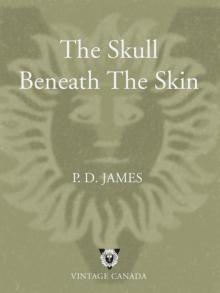 The Skull Beneath the Skin
The Skull Beneath the Skin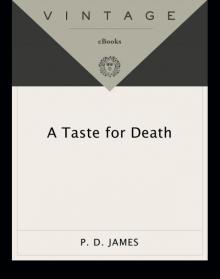 A Taste for Death
A Taste for Death The Children of Men
The Children of Men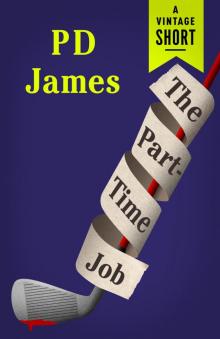 The Part-Time Job
The Part-Time Job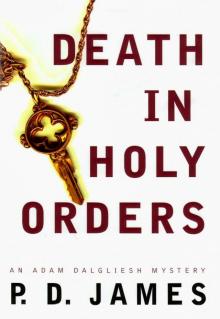 Death in Holy Orders
Death in Holy Orders The Victim
The Victim Shroud for a Nightingale
Shroud for a Nightingale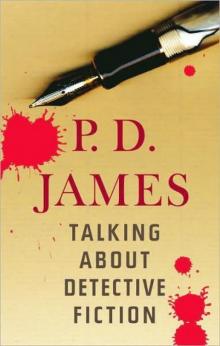 Talking about Detective Fiction
Talking about Detective Fiction Sleep No More
Sleep No More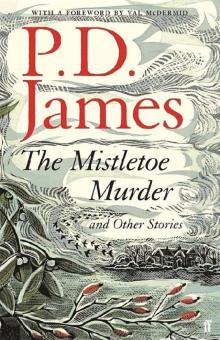 The Mistletoe Murder and Other Stories
The Mistletoe Murder and Other Stories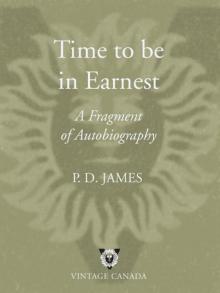 Time to Be in Earnest
Time to Be in Earnest Original Sin
Original Sin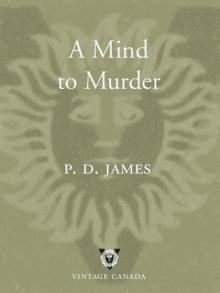 A Mind to Murder
A Mind to Murder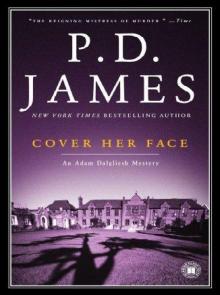 Cover Her Face
Cover Her Face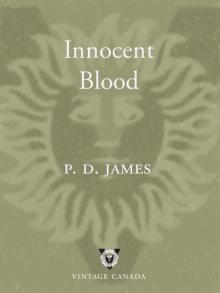 Innocent Blood
Innocent Blood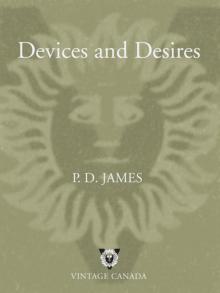 Devices and Desires
Devices and Desires Sleep No More: Six Murderous Tales
Sleep No More: Six Murderous Tales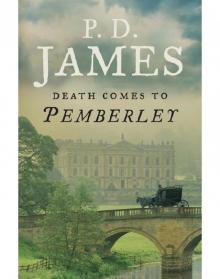 Death Comes to Pemberley
Death Comes to Pemberley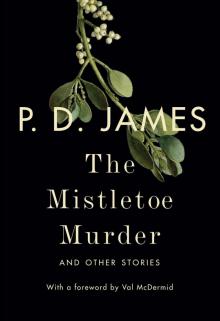 The Mistletoe Murder
The Mistletoe Murder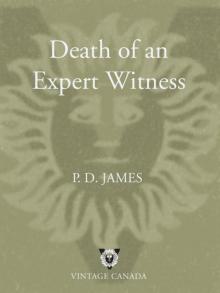 Death of an Expert Witness
Death of an Expert Witness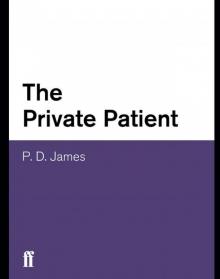 The Private Patient
The Private Patient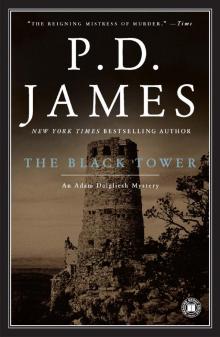 The Black Tower
The Black Tower Devices & Desires - Dalgleish 08
Devices & Desires - Dalgleish 08 Unnatural Causes
Unnatural Causes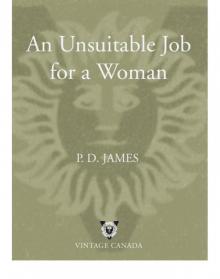 An Unsuitable Job for a Woman
An Unsuitable Job for a Woman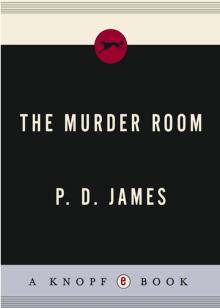 The Murder Room
The Murder Room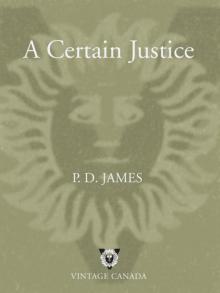 A Certain Justice
A Certain Justice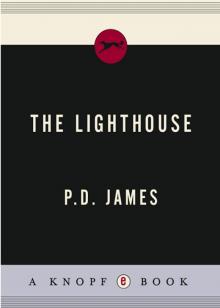 The Lighthouse
The Lighthouse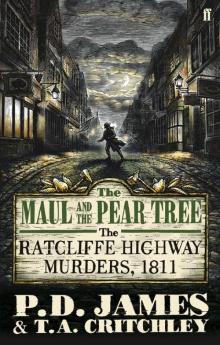 The Maul and the Pear Tree
The Maul and the Pear Tree